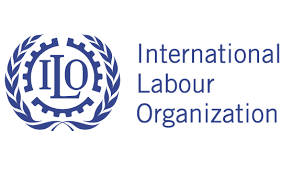
Precarious work and non-standard forms of employment seem to constitute great challenge to labour unions across the globe. Organized labour believe strongly that this class of employment lacks all forms of social protection and thus need to be taken addressed.
But what is precarious work and what are the characteristics? Arne L. Kallerg of University of North Carolina (2014) described the concept of precarious work (or precariousness in work), which is found in both formal and informal sectors of the economies, as work that departs from the norm of standard work (i.e., secure employment with employer; working full-time, year round; working on the employers’ premises under his or her supervision; enjoying extensive statutory benefits and entitlements; and having the expectation of being employed indefinitely).
Precarious work falls below socially accepted, normative standards by which workers have certain rights and employment protections and bear the risks associated with economic life. Arne identified the terms used to describe precarious work to include:
- Contingent work
- Non-standard work
- Non regular work
- A typical work
- Market-mediated work arrangements
- Alternative work arrangement
- Nontraditional employment relation
- Alternative work arrangement
- Nontraditional employment relation
- Flexibility staffing arrangement or work practices
- Vulnerable work
- Disposable work
- New forms of employment

Major types of precarious work Include:
. Temporary work
– Direct hire on temporary labour contracts for fixed or limited term or fixed task
– Hiring via temporary employment agencies or labour workers
– On call/daily hire work
-Contract work
– Outsourcing functions/ activities to other companies (on-site or off-site)
-Independent contractors
-Involuntary part-time work
Precarious work encompasses:
– Insecure unstable and uncertain job
– Jobs with limited economic benefits
– Jobs with limited economic benefits
– Jobs with limited statutory. entitlements
– Jobs with little potential for advancement
– Jobs that expose the worker to dangerous and hazardous conditions.
Given the foregoing, it is believed that the extent to which particular employment relations might be precarious depends on the labour market institutions and welfare systems of particular countries (www.uchicago.edu) it is in consideration of the high level of exposure inherent in precarious work that the Building and Wood Workers International (BWI) and its affiliates as well as representatives of Friedrich Ebert Stiftung (FES) Foundation met in Lomé Togo sometimes last year to brainstorm on the ) possibility of organizing and servicing precarious workers to improve their working conditions in Construction, Wood and Forestry sectors.
In view of the relationship between precarious work and Contracts and Agency Labour (CAL). Joseph Toe. Who represented the international Trade Union Confederation (ITUC) Africa, the global voice of the world working people, allocated some time discussing the challenges of Contracts and Agency Labour (CAL) which employment relationships are increasingly being replaced by commercial relationships, with all risks being transferred from employer to the workers. As a consequence, he said many hard-won gains, such as social protection or anti-discrimination rules, are lost or considerably diluted with the stroke of a pen.
According Joseph Toe, International Federation of Chemical, Energy, Mines and General Workers’ Unions ICEM described CAL as many forms of precarious work, including temporary contract and fixed-term employment, agency work, bogus self-employment, individual contracts, seasonal work, zero hours contracts, on call / daily hire and day labour.
Outsourcing and sub-contracting also falls into the ICEM‘s meaning of CAL. In some cases, individual workers are contracted out. In other cases, entire groups of workers are transferred to a separate company, where they do the same work for inferior conditions. Many of these enterprises are even specifically set up for this purpose. catering only to one company and, in some cases, even operating under the same roof and under the control of the same management team.

The ICEM has come across many examples of companies that exploit legal loopholes. increasingly keen as they are to reduce their employment obligations. These tactics have included:
- Employment of workers through an endless series of short-term contracts that may lapse for short periods before the next contract begins. allowing companies to avoid legislative requirements to make temporary workers permanent after a period of time. in North America, workers employed in such ways have been dubbed ‘permatemps’
Use of abusively long probationary periods - Trainee programmes and apprenticeships that include no educational component.
- So called ‘seasonal workers’ who are employed all year round.
- Creation of fake agencies or fake sub—contractors, established by the user enterprise to avoid obligations to workers.
- Workers who become union members or activists, or voice concerns such as on health and safety issues, often do not have their contracts renewed. and unorganlsed workers are ‘ brought ln to place them.
Problems caused ICEM
Participants at the many national. regional and global CAL conferences organised by the ICEM have highlighted numerous problems experienced by CAL workers. Ranging from employment insecurity and inferior salaries, pension rights issues and working time problems, to major health and safety problems, as well as brutal or abusive treatment.
The ICEM CAL campaign
The ICEM’s CAL campaign, which organises action and activities to address 3 different aspects of CAL – the legal aspect, the company aspect and the trade union aspect – provides not only assistance and solidarity for unions dealing with CAL at the national level. but also works to promote improved protections and better CAL regulations at the international level.
High on the ICEM’s agenda is facilitating the exchange of trade union strategies and best practice. including through various ICEM publications. which are available in several languages. These include:
- CAL country studies
- Information leaflets
- Quarterly CAL newsletters
- A video documentary
- Power Point presentations
- International surveys on precarious work
- A “Short Negotiators Guide”
- A longer “CAL Manual”
All of this, and more. can be found on this web-site: CAL ICEM
CAL workers commonly receive conditions and benefits that are inferior to those of permanent workers. They frequently do not receive health, maternity or holiday benefits, and are often denied sick leave. In addition, most precarious workers receive (often much) lower wages, and do not usually have access to training or career advancement opportunities. At the same time. enormous pressure is put on CAL workers to accept absolute flexibility. CAL workers are asked to be constantly available for work and to accept changes in their assignments.
CAL workers commonly receive conditions and benefits that are inferior to those of permanent workers. They frequently do not receive health, maternity or holiday benefits, and are often denied sick leave. In addition, most precarious workers receive (often much) lower wages, and do not usually have access to training or career advancement opportunities. At the same time. enormous pressure is put on CAL workers to accept absolute flexibility. CAL workers are asked to be constantly available for work and to accept changes in their assignments or functions at any time. Due to the insecure nature of their employment, CAL workers are often afraid of joining or forming a trade union. Precarious work is. as such, often deliberately used as a way to deter union organisation. This, coupled with the fact that CAL jobs are often reclassified to ensure that the workers are legally ineligible for membership in a user enterprise union, means that CAL has a very serious and detrimental impact on freedom of association.
The transition from permanent to precarious work also means that unions tend to have less bargaining power. undermining wage and other negotiations. Trade unions are also confronted with the fact that there are multiple employer entities to deal with when subcontracting or agency work is involved, and the identity of the real employer is often unclear. Furthermore, the fact that workers with different employment status work side-by-side but on different terms and conditions often creates conditions of fear and hostility between permanent and CAL workers.
In his delivery he stated that when workers are employed with some group having condition as a permanent worker and others as temporary workers, there is already by that creation a rivalry problem. He added that subletting has become a problem in all various aspect of work.
The problem of unions not knowing who to discuss with when there is crisis. as the workers are termed the responsibility of recruiting agents by the company because they were outsourced. He added that the unions find it difficult to negotiate or discuss with the companies which makes the workers feel that there was no need to belong to unions as they cannot protect their interest.

He stated however that at the ILO level, the issue of precarious workers has been placed on the front burner. as recommendation has been made to tackle the problem such as the recommendation 198.
According to him. Africa has become an Eldorado of precarious work.

He emphasized the need for enforcement of the law and those saddled with the responsibility of enforcing the law to be independent. He emphasized that what was needed is a political will to confront the problem of precarious employment in Africa.
On the part of the unions. he said effort must be made to unionize precarious workers, and that the unions must also be united to deal with precarious work problems
By our correspondent.
Note: This article was originally published in The Nigerian Construction Digest Vol 1 No.5 May 2018. All images /pictures are from www.google.com

